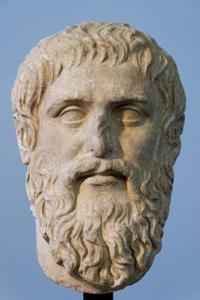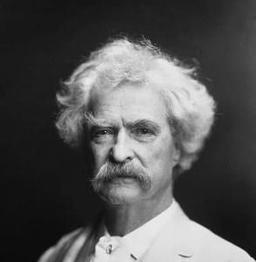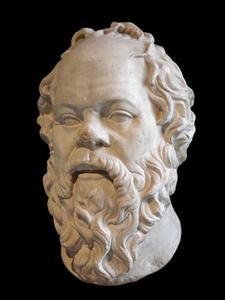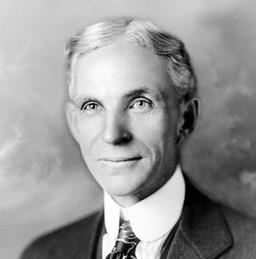77 Quotes
"Efficiency depends not only on the product itself, but also on the task for which it is used."
— Oleg Ya
Added value – What is it and how to measure it - GoPractice"The effectiveness of a product depends on the context."
— Oleg Ya
Added value – What is it and how to measure it - GoPractice"The value of a product is subjective."
— Oleg Ya
Added value – What is it and how to measure it - GoPractice"The perception of value is not always rational."
— Oleg Ya
Added value – What is it and how to measure it - GoPractice"This is why measuring the effectiveness of a product and its added value in comparison to alternatives is a fundamental part of product work."
— Oleg Ya
Added value – What is it and how to measure it - GoPractice"Step 1. Determine the variables that define the effectiveness of solving the “job-to-be-done.”"
— Oleg Ya
Added value – What is it and how to measure it - GoPractice"Step 2. Compare available solutions based on these variables."
— Oleg Ya
Added value – What is it and how to measure it - GoPractice"If the characteristics are measured in different units, then try to understand the weight and importance of each of the factors for users."
— Oleg Ya
Added value – What is it and how to measure it - GoPractice"We now have two characteristics to assess the efficiency of online payment providers: The commission rate of the service and payment throughput."
— Oleg Ya
Added value – What is it and how to measure it - GoPractice"If the derived variables fully characterize the effectiveness of solving the problem of accepting payments, then the new payment provider creates added value in comparison to the old one."
— Oleg Ya
Added value – What is it and how to measure it - GoPractice"Comparing these variables will allow you to understand whether your product (a certain online store) creates added value for the user or not."
— Oleg Ya
Added value – What is it and how to measure it - GoPractice"Often, comparing your product to the alternatives on efficiency variables will allow you to understand user behavior and the dynamics of market shares."
— Oleg Ya
Added value – What is it and how to measure it - GoPractice"Launched in 2004, the Prime subscription reduced the cost and delivery time for subscribers. The price reduction led to an increase in demand and a decrease in the share of fixed costs of goods, which again allowed the company to reduce prices."
— Oleg Ya
Added value – What is it and how to measure it - GoPractice"The launch of FBA (Fulfilled by Amazon) made it possible to increase the reliability and speed of delivery of goods from the marketplace, which again increased demand and lowered prices."
— Oleg Ya
Added value – What is it and how to measure it - GoPractice"Amazon is so far ahead the competition that other players in the market no longer have a chance to engage in direct competition:"
— Oleg Ya
Added value – What is it and how to measure it - GoPractice"Amazon solves the problem of end users more efficiently than most of its direct competitors. There is no reason for Amazon customers to switch to alternatives, including Walmart and eBay."
— Oleg Ya
Added value – What is it and how to measure it - GoPractice"As Michael Porter said, your goal is not to be the best in your industry. It is to offer a unique product tailored to the task and context of a particular segment."
— Oleg Ya
Added value – What is it and how to measure it - GoPractice"This metric characterizes the effectiveness of the “job” quite well. But how to measure it?"
— Oleg Ya
Added value – What is it and how to measure it - GoPractice"The easiest way is based on actual product usage data, e.g., how much effort (time in app, profiles viewed, messages sent) it takes a user to get a date or an active chat (a good proxy metric for dates)."
— Oleg Ya
Added value – What is it and how to measure it - GoPractice"Another way is to regularly conduct a study where a group of people will invest the same amount of effort in your product and a competing product, and then compare the result (active chats and dates)."
— Oleg Ya
Added value – What is it and how to measure it - GoPractice"People choose a new product because it makes their life better. That is why increasing added value is the core of product work."
— Oleg Ya
Added value – What is it and how to measure it - GoPractice"Step 1. Determine the variables that characterize the effectiveness of solving the task."
— Oleg Ya
Added value – What is it and how to measure it - GoPractice"Step 2. Compare available products to solve the problem based on these variables."
— Oleg Ya
Added value – What is it and how to measure it - GoPractice"There is a catch, though. The time to value can be reduced only within certain limits."
— Oleg Ya
How time to value and product complexity shape user activation - GoPractice"No matter how well you streamline the onboarding process, you simply can’t compress those weeks into minutes."
— Oleg Ya
How time to value and product complexity shape user activation - GoPractice"You can (and should!) reduce time to value as much as possible. This is an important lever for improving activation rates, after all."
— Oleg Ya
How time to value and product complexity shape user activation - GoPractice"But a demo account would not give users the opportunity to experience added value for themselves or see the actual benefit for them of investing in learning and integrating Amplitude."
— Oleg Ya
How time to value and product complexity shape user activation - GoPractice"precisely that personal analysis is at the heart of activation."
— Oleg Ya
How time to value and product complexity shape user activation - GoPractice"At one point, major game developer Playrix started making ads that featured puzzle mechanics not representative of actual gameplay."
— Oleg Ya
How time to value and product complexity shape user activation - GoPractice"If a (misleading) mini-game is engaging, it is more likely to be shown by ad networks to more users."
— Oleg Ya
How time to value and product complexity shape user activation - GoPractice"Any gains from these mini-games (from improved user acquisition) would have to offset in-product conversion losses (by users who abandoned the game due to unmet expectations)."
— Oleg Ya
How time to value and product complexity shape user activation - GoPractice"The biggest match-3 games are very strong products aimed at a mass audience with minimal time to value, good retention, and high lifetime value (LTV)."
— Oleg Ya
How time to value and product complexity shape user activation - GoPractice"The relatively low intent of users brought in by misleading advertising is still enough for many of them to experience the product’s value and be happy enough to make purchases."
— Oleg Ya
How time to value and product complexity shape user activation - GoPractice"As a product’s time to value decreases, so does the threshold level of intent necessary for a new user to appreciate the product’s value."
— Oleg Ya
How time to value and product complexity shape user activation - GoPractice"The thing is that Workplace is a complex product with a long time to value."
— Oleg Ya
How time to value and product complexity shape user activation - GoPractice"For Workplace to catch on, there usually had to be a very motivated first user with backing from top management."
— Oleg Ya
How time to value and product complexity shape user activation - GoPractice"These decisions require a champion with a lot of “pull”."
— Oleg Ya
How time to value and product complexity shape user activation - GoPractice"The problem, for us, was that display ads by their nature will tend to attract users with low motivation and intent."
— Oleg Ya
How time to value and product complexity shape user activation - GoPractice"This disbalance—between new users’ level of intent and product complexity—was the main reason why display ads did not work for Workplace."
— Oleg Ya
How time to value and product complexity shape user activation - GoPractice"For complex products, display ads can be an important tool as part of a broader marketing mix."
— Oleg Ya
How time to value and product complexity shape user activation - GoPractice"Such ads build customer awareness and demand that can be later developed with other channels and tools."
— Oleg Ya
How time to value and product complexity shape user activation - GoPractice"As we saw with match-3 games, simple products can sometimes get ahead even with the help of misleading advertising that draws in less-than-motivated users."
— Oleg Ya
How time to value and product complexity shape user activation - GoPractice"For complex products with a long time to value, we have to structure activation so that users start the in-product onboarding flow only when they are truly ready—with enough motivation and trust—to experience the product’s value."
— Oleg Ya
How time to value and product complexity shape user activation - GoPractice"That’s why sometimes, counterintuitively, it makes sense to add friction at certain stages of activation. This friction will improve timing and give better overall results."
— Oleg Ya
How time to value and product complexity shape user activation - GoPractice"These mechanisms need to filter out new users who don’t currently have enough motivation. And if done right, these mechanisms will ensure sufficient support throughout the user journey, all the way from sign-up to the “aha moment”."
— Oleg Ya
How time to value and product complexity shape user activation - GoPractice"It follows that the longer a product’s time to value, the more we should make the process for activating and onboarding new users sophisticated and personalized."
— Oleg Ya
How time to value and product complexity shape user activation - GoPractice"Components include the product itself, people (sales team and Customer Success Managers), tutorials and educational materials, a knowledge base, and case studies of successful clients."
— Oleg Ya
How time to value and product complexity shape user activation - GoPractice"User acquisition and the monetization model are also hugely important. They shape the level of motivation and intent of users who encounter the product."
— Oleg Ya
How time to value and product complexity shape user activation - GoPractice"So when designing activation for a complex product, the team needs to keep all these factors in mind to create a system that can find target users through growth channels, build relationships with them, create an awareness of the problem and demand for a solution, and ultimately deliver value."
— Oleg Ya
How time to value and product complexity shape user activation - GoPractice"As product complexity increases, so does the importance of user motivation and supporting users as they move from sign-up to obtaining value."
— Oleg Ya
How time to value and product complexity shape user activation - GoPractice"The key reason was that for complex products, successful activation begins long before sign-up."
— Oleg Ya
How time to value and product complexity shape user activation - GoPractice"To meaningfully improve activation, the team needed to broaden its focus and look at the user’s entire journey, from hearing about the product to the “aha moment”."
— Oleg Ya
How time to value and product complexity shape user activation - GoPractice"Doing so will take additional materials, case studies, webinars, or a personal call with the sales team. Product-level activation can take place only after all these other stages have been completed."
— Oleg Ya
How time to value and product complexity shape user activation - GoPractice"That’s why for complex products, users should start the onboarding flow only if they already want to use the product and are aware of how it can make their life better."
— Oleg Ya
How time to value and product complexity shape user activation - GoPractice"The higher the complexity and time to value, the more personal the user activation process must be."
— Oleg Ya
How time to value and product complexity shape user activation - GoPractice"But for more complex B2B products, obtaining similar results may require a very strong brand and dedicated team helping the client to integrate the product into existing processes and obtain value."
— Oleg Ya
How time to value and product complexity shape user activation - GoPractice"“The primary thing that any technology startup must do is build a product that’s at least ten times better at doing something than the current prevailing way of doing that thing. Two or three times better will not be good enough to get people to switch to the new thing fast enough or in large enough volume to matter.”"
— Oleg Ya
Should a product be 10 times better to achieve product/market fit? - GoPractice"“As a good rule of thumb, proprietary technology must be at least 10 times better than its closest substitute in some important dimension to lead to a real monopolistic advantage. Anything less than an order of magnitude better will probably be perceived as a marginal improvement and will be hard to sell, especially in an already crowded market.”"
— Oleg Ya
Should a product be 10 times better to achieve product/market fit? - GoPractice"Thiel is talking about a 10x improvement in some important dimension, not a 10x improvement in performance on the whole problem."
— Oleg Ya
Should a product be 10 times better to achieve product/market fit? - GoPractice"The current CRM system is integrated with other services Company X uses. The transition to a new system will require new integration efforts, which again, are costly."
— Oleg Ya
Should a product be 10 times better to achieve product/market fit? - GoPractice"For Company X to switch to a new CRM system, it would take a lot more value added than a 1.5x savings on subscription costs."
— Oleg Ya
Should a product be 10 times better to achieve product/market fit? - GoPractice"If you want to create a new in-demand product, then you need to offer users a more efficient solution."
— Oleg Ya
Should a product be 10 times better to achieve product/market fit? - GoPractice"Even if your product is more efficient, product/market fit is not guaranteed. Different tasks will require different levels of added value in order to convince the user to switch."
— Oleg Ya
Should a product be 10 times better to achieve product/market fit? - GoPractice"the added value should be greater than the switching cost."
— Oleg Ya
Should a product be 10 times better to achieve product/market fit? - GoPractice"Amazon started out by selling books online. Jeff Bezos explained that he chose books first because in this category, it was easier to create maximum added value in comparison to brick-and-mortar retailers."
— Oleg Ya
Should a product be 10 times better to achieve product/market fit? - GoPractice"“I picked books because books are super unusual in one respect: there are more items in the book category than in any other category. There are three million different books in print around the world at any given time. The biggest bookstores had only 150,000 titles. So the founding idea of Amazon was to build a universal selection of books in print.”"
— Oleg Ya
Should a product be 10 times better to achieve product/market fit? - GoPractice"The largest offline bookstore could hold up to 100,000 books. Amazon gave customers access to 1 million books."
— Oleg Ya
Should a product be 10 times better to achieve product/market fit? - GoPractice"But for a company that has completely switched to Microsoft Teams, Slack might have zero added value."
— Oleg Ya
Should a product be 10 times better to achieve product/market fit? - GoPractice"That is why the rapid growth of Teams through Microsoft’s own distribution and sales channels is such a big problem for Slack."
— Oleg Ya
Should a product be 10 times better to achieve product/market fit? - GoPractice"That is why the growth of mobile messengers in the US market was slower than in Latin America. The added value of messengers was significantly higher for users in Latin America."
— Oleg Ya
Should a product be 10 times better to achieve product/market fit? - GoPractice"The current product used to solve the problem: The added value of Slack is small for a company that uses Teams, but is big for a company that relies mostly on email."
— Oleg Ya
Should a product be 10 times better to achieve product/market fit? - GoPractice"User context: There are many factors that can make a particular solution more valuable to users. We discussed the subjectivity of added value in detail in a previous article."
— Oleg Ya
Should a product be 10 times better to achieve product/market fit? - GoPractice"Information about alternatives and their effectiveness:"
— Oleg Ya
Should a product be 10 times better to achieve product/market fit? - GoPractice"The added value of the same product can vary significantly across different use cases and user segments. As a result, a product may achieve product/market fit in certain segments but not in others."
— Oleg Ya
Should a product be 10 times better to achieve product/market fit? - GoPractice"The higher the added value of the product and the lower the cost of switching, the more likely it is to convince users of a segment to switch to the new solution. Accordingly, the growth rate in that segment will be higher. Focusing marketing and product resources on these segments will maximize results."
— Oleg Ya
Should a product be 10 times better to achieve product/market fit? - GoPractice"Growth acceleration in segments where product/market fit was initially achieved: Greater added value will result in faster switching from the old solution to the new one."
— Oleg Ya
Should a product be 10 times better to achieve product/market fit? - GoPractice"We learned about the link between added value and product/market fit. This brings us to another important idea: Product/market fit is not a binary function (you either have it or you don’t). Product/market fit is a spectrum. It can be strong or weak, and its strength can change over time."
— Oleg Ya
Should a product be 10 times better to achieve product/market fit? - GoPracticeExplore More Quotes 📚
Want to Save Quotes?
Glasp is a social web highlighter that people can highlight and organize quotes and thoughts from the web, and access other like-minded people’s learning.

















